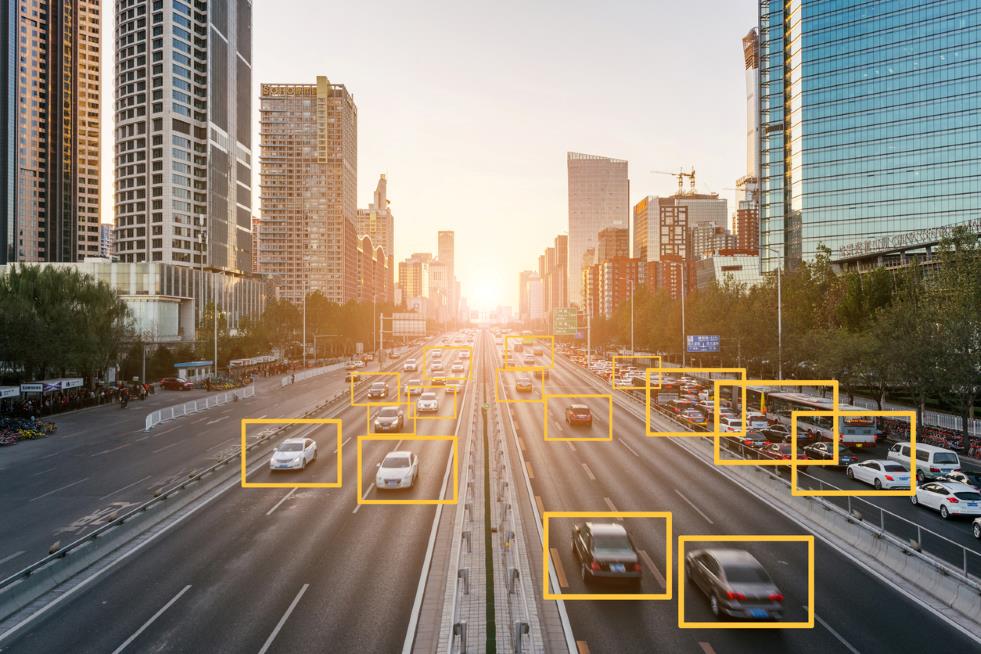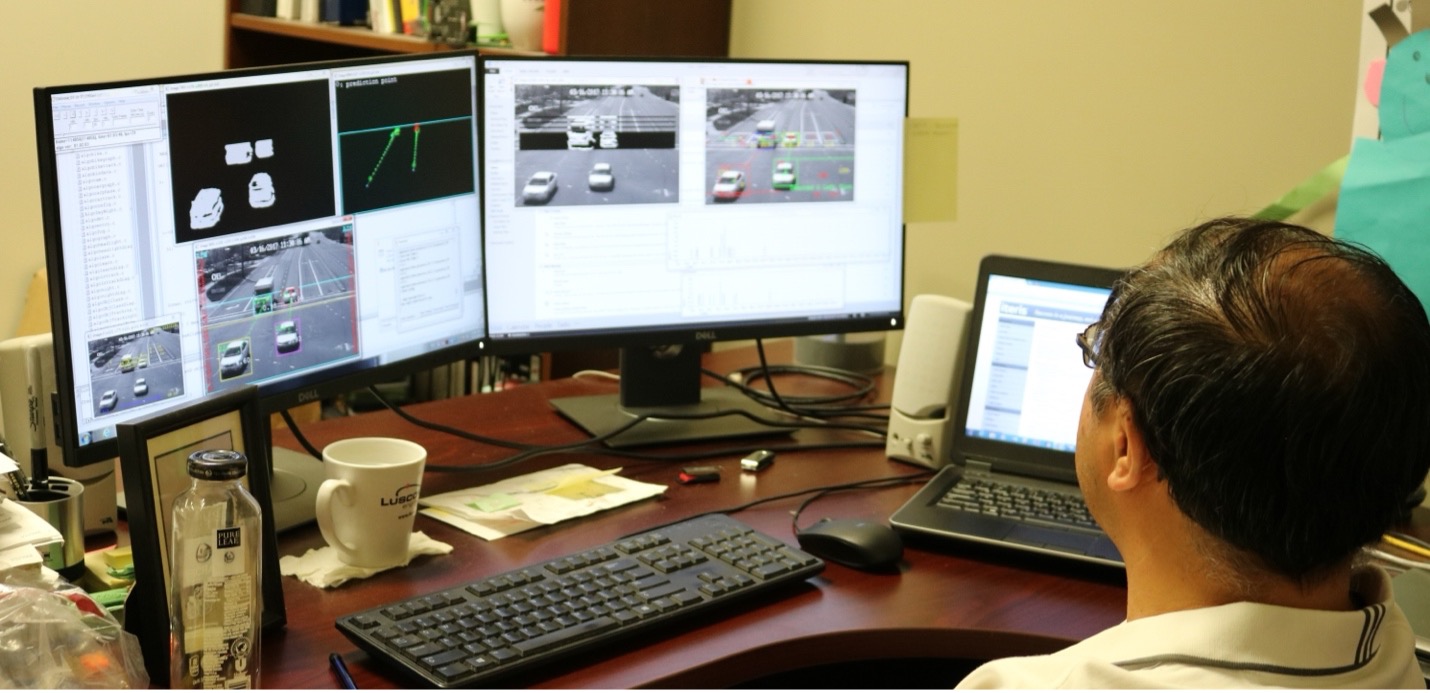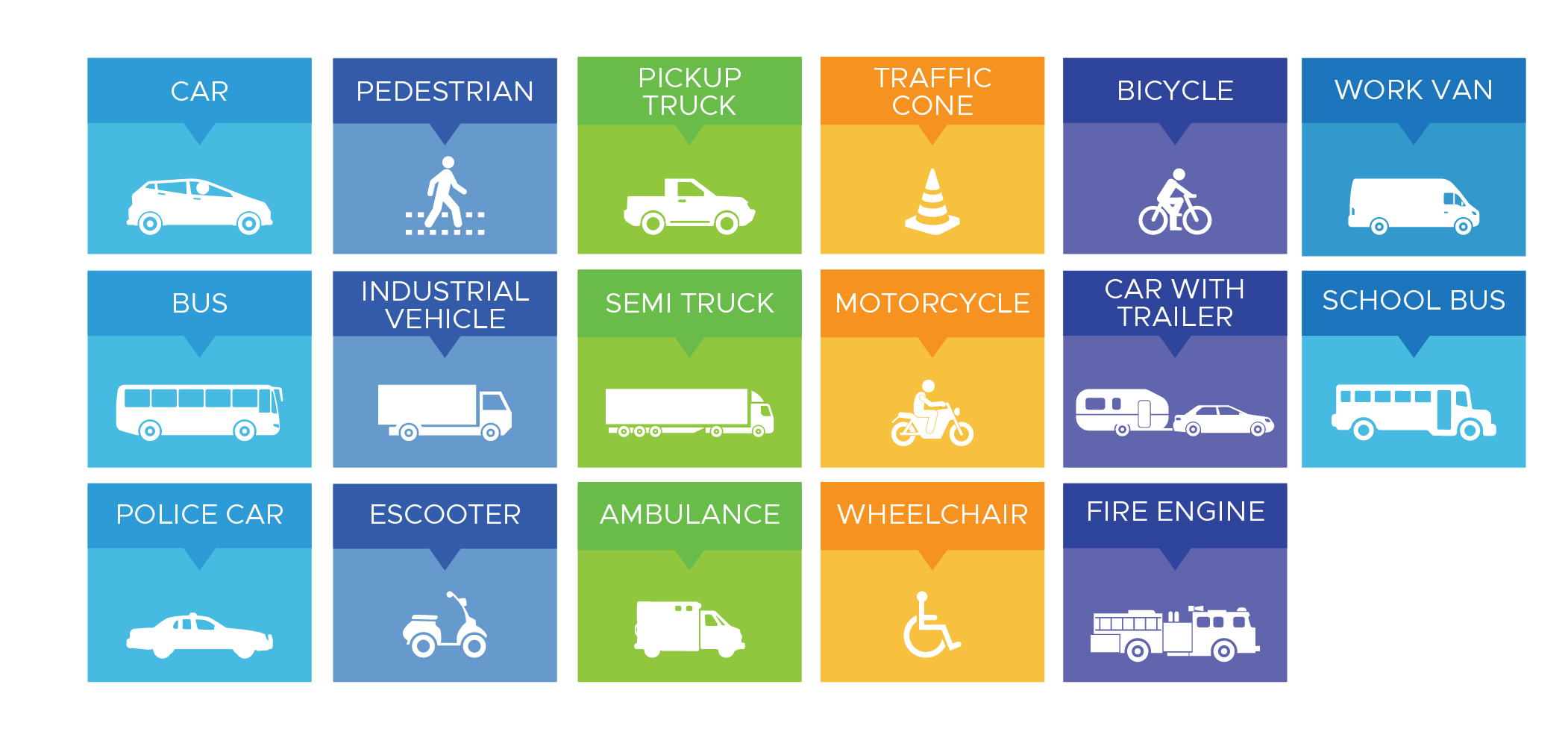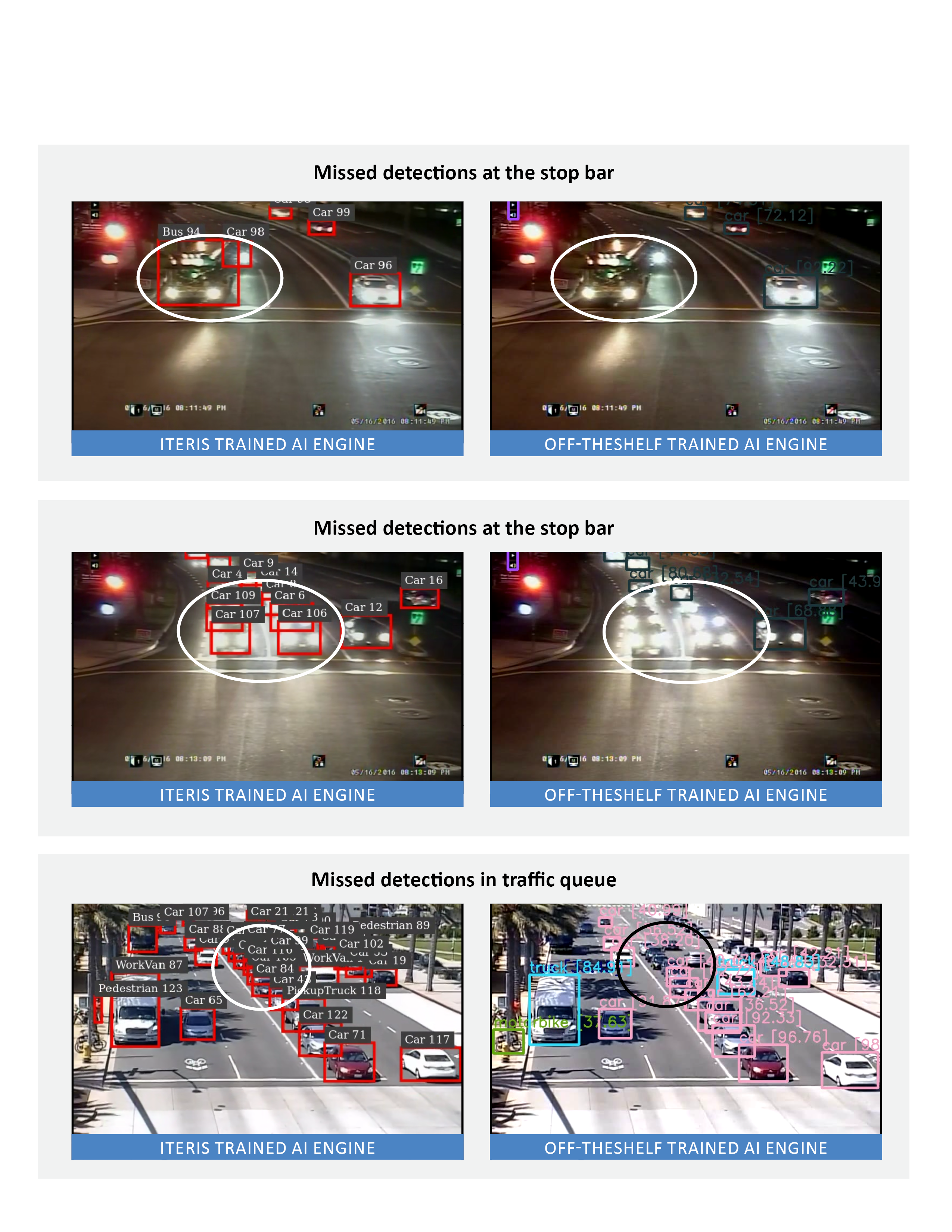
Not All AI Is Created the Same: Inside Our AI Detection System

A Little History
Before the rise of AI-powered detection, we relied on what is now called traditional machine vision (MV). Any technically competent person could set up a processor, download a detection algorithm from the cloud, plug in a video source and start detecting vehicles. These systems have been prevalent over the years and appeared effective, but often relied on an optimal field of view and near-perfect weather conditions.
But in the real world, conditions change. When visibility drops or camera angles shift, detection performance with these legacy systems would often drop significantly—typically hovering around 80%.
 Figure 1- Iteris engineers refining proprietary detection algorithms for real-world performance.
Figure 1- Iteris engineers refining proprietary detection algorithms for real-world performance.
At Iteris, we’ve spent years refining our technology to overcome these limitations. Thanks to deep expertise and continuous detection performance enhancements, our detection systems consistently perform at the highest levels, even in the toughest conditions. This is a key advantage that has always distinguished us from off-the-shelf solutions in the market.
The AI Explosion
Fast forward to today, and AI has transformed what’s possible. That same technically competent person can now achieve detection performance in the mid-90% range using an off-the-shelf AI detection solution. That’s a major leap from traditional MV—and it’s lowered the barrier to entry for others in the market.
But ask yourself this: Is 95% detection accuracy good enough?
If the detection system misses one vehicle in a group, the impact may be negligible. The light will still turn green. Traffic still flows. But if there’s only one lone vehicle and it’s missed, safety and efficiency can be compromised. Especially under adverse weather or lighting conditions, detection accuracy must be more than “good enough.”
The Heart of AI: Training Data
AI is not self-learning. At its core, any AI detection system depends on training data created by people. For the video world, this process is called annotation. Annotation involves taking an image, drawing a box around an object and labeling that object. The more varied views of an object that can be annotated, the more accurate the trained model becomes.
Once a significant number of objects have been annotated, the data is fed into the AI engine to create a trained model. This model is then integrated into the AI-powered detection system and is used to identify objects in the field of view.
Why Iteris AI Detection is Still the Industry Standard
While others may rely on generic or crowdsourced datasets, Iteris builds its own from the ground up. We have annotated more than 1 million objects across 147,000 images, covering a wide range of object types: passenger cars, motorcycles, buses, trucks, bikes, semi-trucks, school buses, pedestrians and more.
 Figure 2 – Our AI models are trained to recognize the above with over 1,000,000 custom annotations across 147,000 images.
Figure 2 – Our AI models are trained to recognize the above with over 1,000,000 custom annotations across 147,000 images.
But it’s not just the number of objects that are annotated—it’s also about the environmental conditions in which they are captured. Our training data includes objects under challenging real-world conditions:
- Fog
- Snow
- Ice
- Rain
- Sun glare
- Low light
- Various geometries
This rigorous and intentional approach to data creation ensures Iteris’s AI detection system continues to lead the industry in accuracy and reliability.
 Figure 3 - Iteris AI algorithm detecting white vehicles in heavy fog.
Figure 3 - Iteris AI algorithm detecting white vehicles in heavy fog.
And more examples of why training data matters:

The Bottom Line
While AI has significantly raised the bar for detection accuracy, not all AI is created equal. The difference lies in the depth and quality of training data, the rigor of annotation, and the commitment to performance in real-world conditions. At Iteris, we don’t use shortcuts. We don’t settle for off-the-shelf or “good enough.” We build systems that perform when it matters most—because in traffic detection, when every road user counts, so does every detection.
Related Posts:
About the Author

Michael Whiting is VP, Engineering, Advanced Sensor Technologies at Iteris.
Connect with Michael Whiting on LinkedIn
 X
(Twitter)
X
(Twitter)
 Facebook
Facebook LinkedIn
LinkedIn Copy
Link
Copy
Link Email
Email

